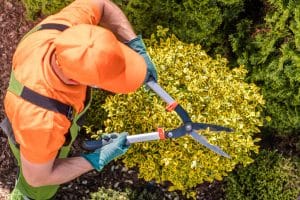Pine Beetles Texas pose a serious environmental threat in Texas, wreaking havoc on the state’s sensitive ecosystems and forestry. These invasive insects, which include species such as the Southern Pine Beetle and Mountain Pine Beetle, endanger the survival of pine trees around the world. Their devastating infestations frequently target vulnerable or stressed trees, wreaking havoc on forests and landscapes. Understanding the seriousness of the situation is critical for developing successful management tactics. In this article, we look at the impact of pine beetles in Texas, including detection, prevention, and management measures, as well as the collaborative efforts needed to reduce their broad devastation.
The Pine Beetle Texas Infestation Crisis
The pine beetle infestation epidemic in Texas poses a severe danger to the state’s forestry and natural environments. These small insects, notably the Southern Pine Beetle and Mountain Pine Beetle, are extremely harmful to pine trees. They target weaker or stressed plants, initiating damaging assaults that endanger the trees’ health. Once infected, the beetles reproduce fast, overpowering the tree’s defense mechanisms and resulting in death. Their infestations grow quickly, inflicting considerable damage across huge wooded regions, changing ecosystems and altering landscapes.
This problem not only affects individual trees but also offers significant hazards to entire ecosystems. The massive devastation produced by pine beetle infestations may have disastrous repercussions, including increased wildfire risks, economic losses in the forestry industry, and substantial changes in the environment.
Identifying Pine Beetle Infestation
Identification of pine beetle infestations is critical for prompt intervention and mitigation activities. Look for unmistakable evidence of the presence of these damaging insects on pine trees. Boring dust, which appears as tiny, sawdust-like particles collecting around the tree’s base or in bark cracks, is a typical sign. In addition, look for pitch tubes, which are little lumps of resin on the tree’s bark that frequently indicate the tree’s attempt to repel the beetle invasion. Another indicator of an active infestation is reddish-brown boring dust seen on the tree’s outer bark or near its base. Furthermore, the existence of holes in the bark caused by adult beetles during their entry or escape might be a sign of infestation.
Impact on Forests and Landscapes
Pine beetle infestations have a far-reaching influence in Texas, devastating whole forests and landscapes. As these insects attack and infest pine trees, the cumulative effect can be devastating. The loss of these vital trees affects the biological balance inside forests, impacting biodiversity and changing landscapes. Dead or dying trees not only provide aesthetic problems, but also offer significant environmental dangers. Infested trees provide potential fuel for wildfires, making wooded regions more vulnerable to these destructive catastrophes. Furthermore, the loss of healthy trees impacts soil stability and nutrient cycles, further affecting the whole ecosystem. The ripple impact of pine beetle infestations reverberates across numerous ecological aspects, underscoring the critical need for appropriate management measures to sustain the environment.
Environmental Consequences Pine Beetles Texas
The environmental repercussions of pine beetle outbreaks in Texas are extensive and diverse. These infestations might have a negative impact on the ecosystem. For starters, increased mortality of pine trees upsets the delicate balance within ecosystems, affecting the richness of plant and animal species that rely on these trees for shelter and nourishment. Furthermore, the buildup of dead and dying trees acts as potential fuel for wildfires, increasing the danger of uncontrollable forest fires. These fires not only kill plants but also emit significant amounts of carbon dioxide into the atmosphere, increasing climate change. Furthermore, the changed landscape caused by extensive tree death can cause soil erosion and degradation, affecting the overall health of ecosystems. Addressing these environmental repercussions necessitates proactive approaches.
Preventive Measures Pine Beetles Texas
Preventive actions are critical in reducing the negative impact of pine beetle outbreaks in Texas. The first line of protection against these invasive pests is to maintain maximum tree health. Inspect trees on a regular basis for symptoms of stress or weakness, and treat problems like drought, disease, or overpopulation as soon as possible. Proper forest management measures, such as thinning congested stands and lowering tree density, assist to reduce the likelihood of beetle infestation. Removal of diseased or dead trees from impacted regions on time can help prevent the spread of beetles to healthy trees. Furthermore, providing preventative treatments, such as protective coatings or pesticides, might preserve vulnerable trees.
Management and Control Strategies
Implementing appropriate management and control measures is critical in limiting the expansion of pine beetles in Texas. Pheromones can be used to disrupt mating patterns, and mass capturing tactics can assist reduce beetle numbers. Furthermore, executing managed fires in afflicted regions might destroy beetle-infested trees and disturb their reproductive habitats. The use of tree clearance procedures, particularly the rapid removal of diseased or dead trees, minimizes the spread of beetles to healthy trees. Biological measures, such as introducing natural predators of pine beetles, may also assist in population management. Furthermore, encouraging collaboration among forestry specialists, government agencies, and local people is critical in monitoring, developing, and implementing new management strategies. By incorporating these measures into complete management plans, Texas can successfully limit the impact of pine beetle outbreaks.
- Can you plant a tree where a stump was removed
- How to remove tree roots from lawn
- How to remove mistletoe from trees
The Economic Impact, Pine Beetles Texas
The economic consequences of pine beetle infestations in Texas go beyond ecological considerations, affecting a wide range of industries. The forestry sector, which is vital to the state’s economy, is suffering significant losses as a result of decreasing timber output caused by tree mortality. Reduced wood yields reduce earnings, putting employment and lives at risk. Furthermore, the expenses of controlling and reducing infestations place a financial pressure on landowners, municipalities, and communities. Paper and wood product manufacture, for example, suffers supply chain interruptions, potentially leading to price rises and market instability. Furthermore, decreasing property prices and tourism-related consequences caused by visually degraded landscapes have an influence on local economy. Addressing these economic repercussions requires preemptive actions, collaborative activities, and long-term expenditures in research and management.
FAQS
1. What draws pine bugs to trees?
Pine beetles are drawn to stressed or weaker trees, which are generally the result of conditions such as drought, disease, or overpopulation.
2. How can I recognize a pine beetle infestation?
Look for sawdust, pitch tubes, and reddish-brown boring dust on tree bark to indicate an active infestation.
3. Are pine beetles dangerous to humans?
Although pine beetles can not directly damage humans, their influence on forests and landscapes can have an indirect impact on populations through increased wildfire danger.
4. Can pine beetle outbreaks be avoided?
Maintaining tree health, effective forest management, and prompt removal of affected trees can help avoid extensive infestations.
5. What are the environmental repercussions of pine beetle infestations?
Pine beetle infestations can raise the danger of wildfires in wooded regions and neighboring towns.
Conclusion
To summarize, the threat presented by pine beetles in Texas is a critical matter that requires immediate attention and smart response. These invasive insects endanger the health of pine trees, ecosystems, and local economy. The impact of pine beetle infestations extends beyond individual trees, impacting entire forests, landscapes, and biodiversity. Urgent actions, such as proactive prevention, early identification, and effective management techniques, are required to reduce their severe effects. Collaboration among stakeholders, communities, and governmental entities is critical in addressing these infestations.




